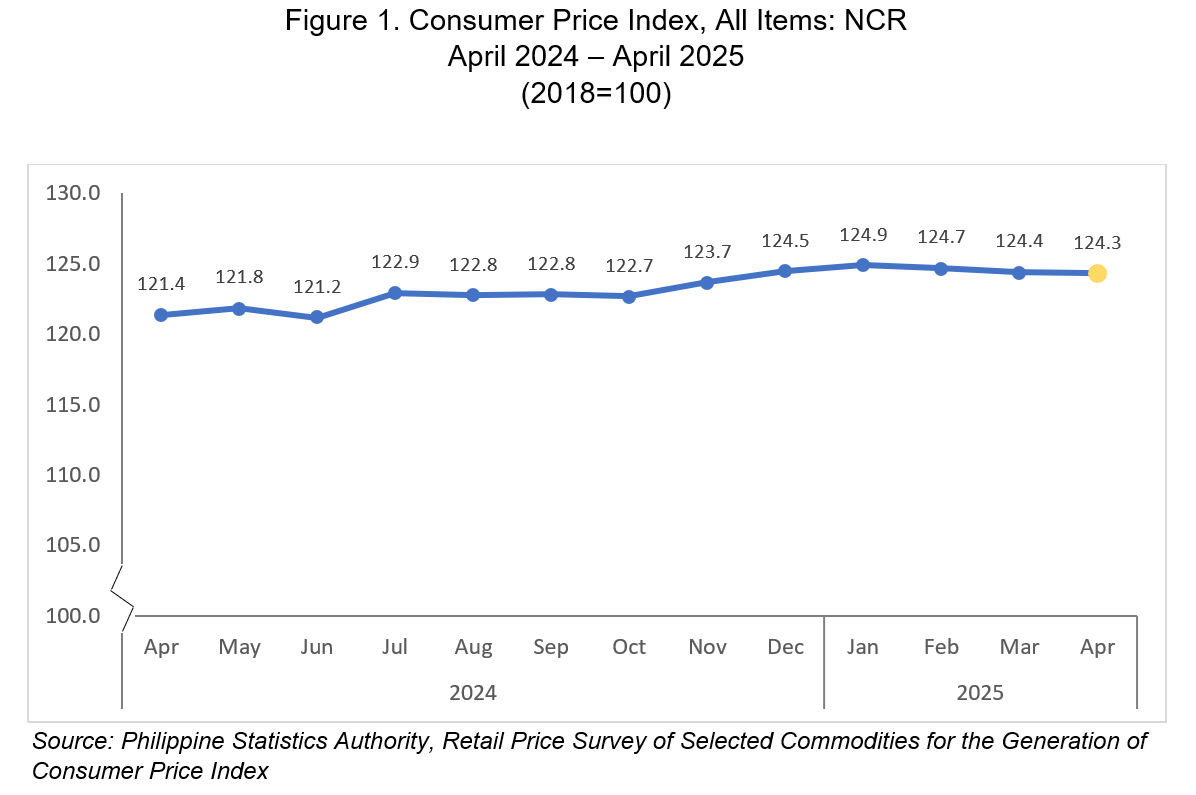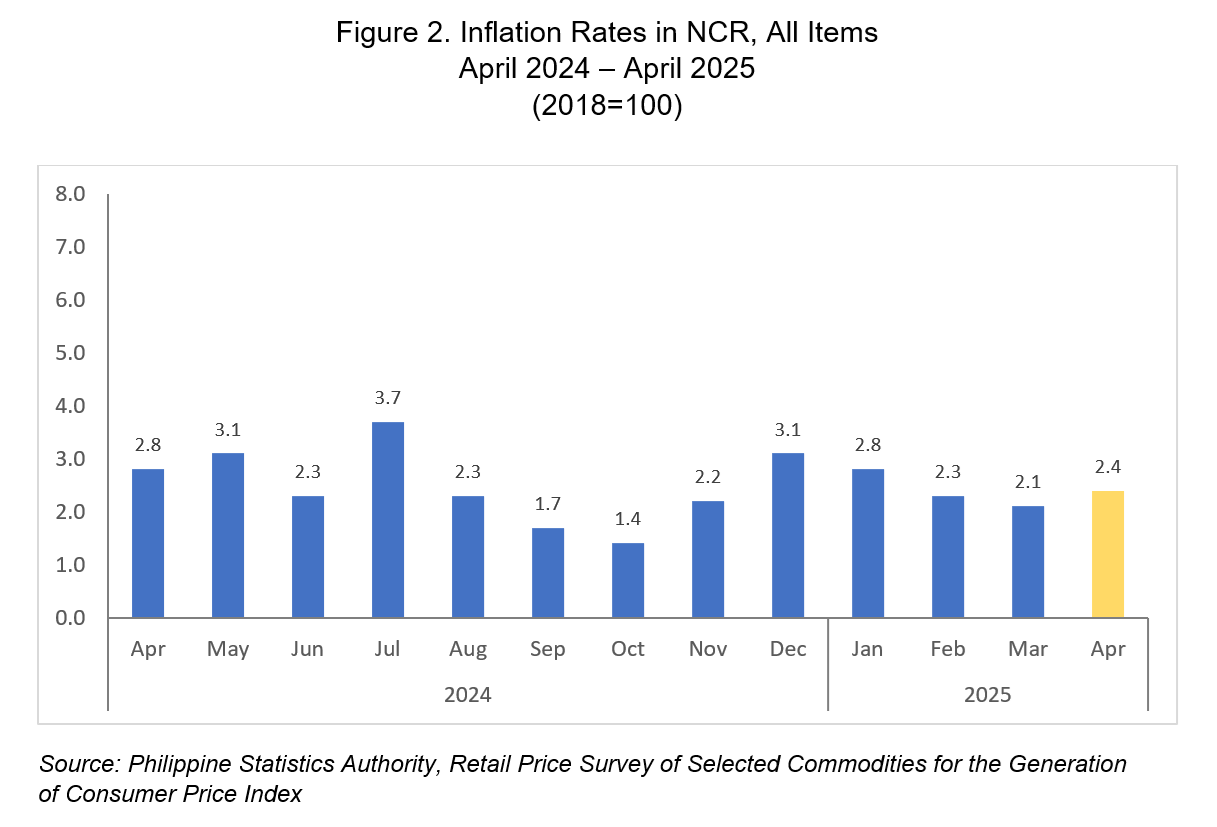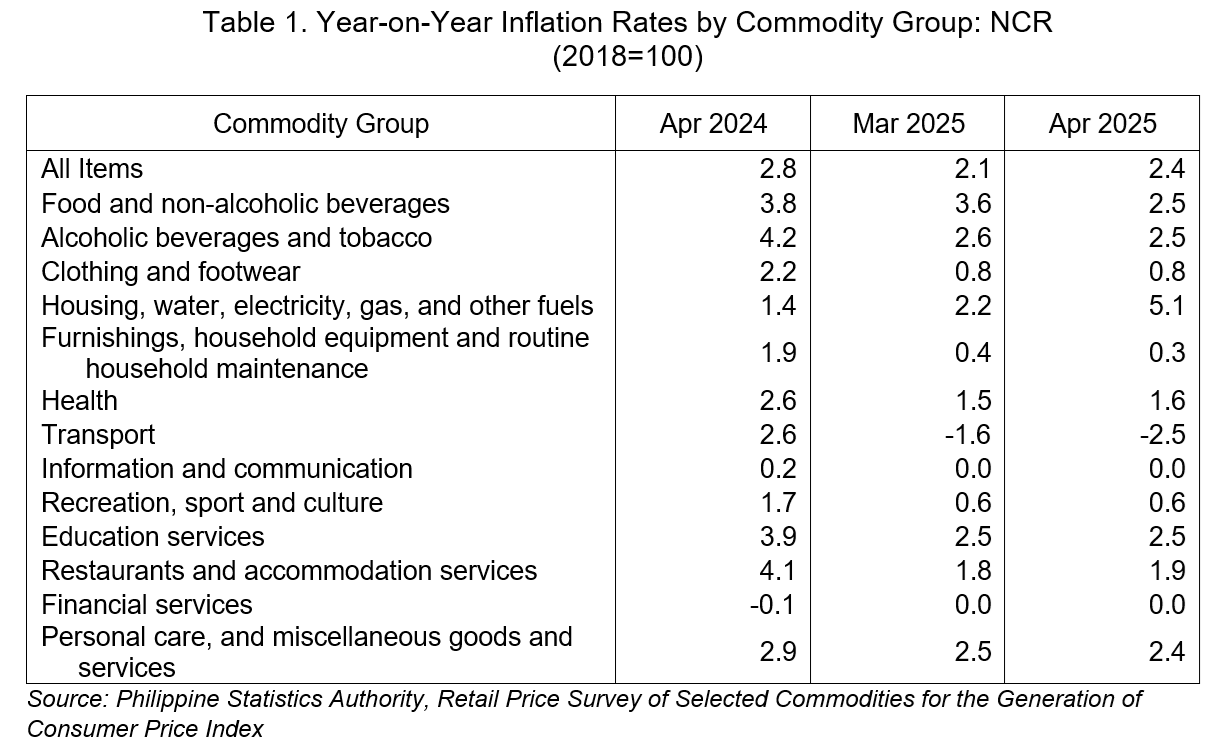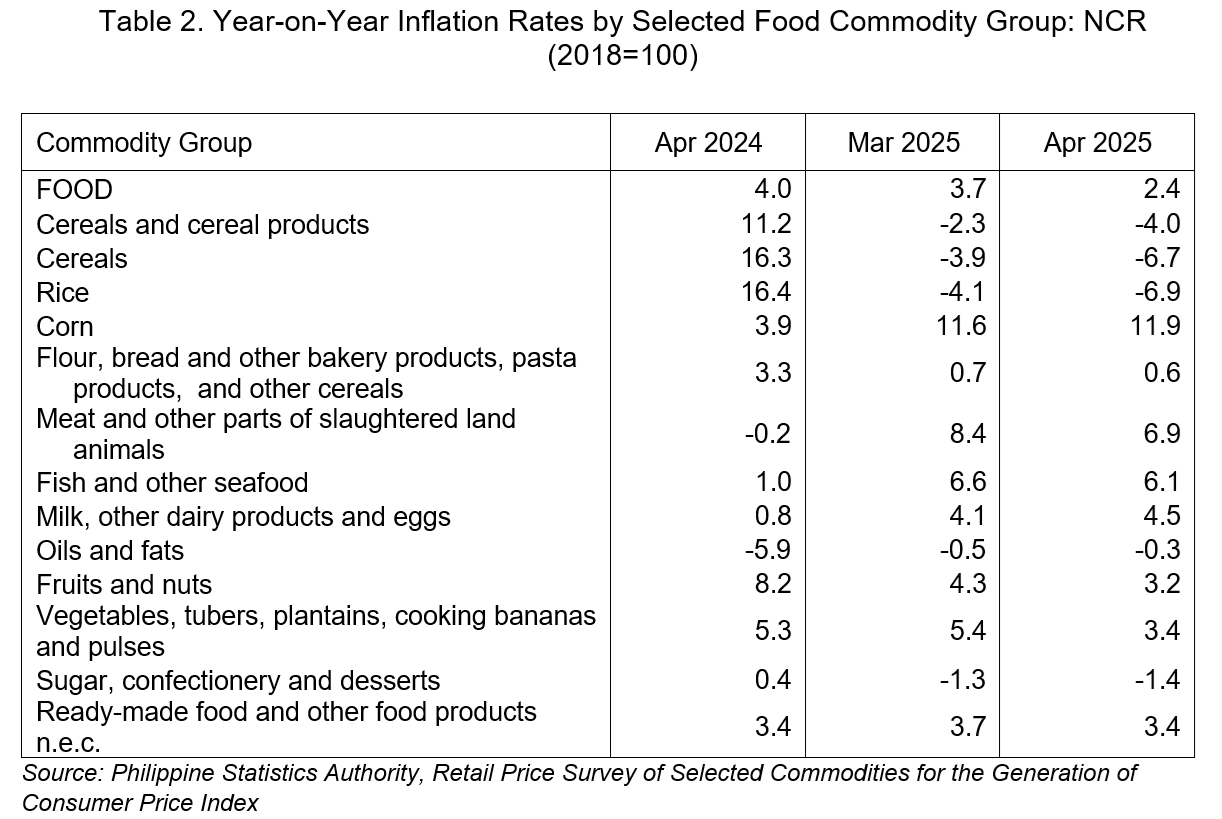Consumer Price Index in NCR decreases to 124.3
The Consumer Price Index (CPI) in the National Capital Region (NCR) decreased to 124.3 percent in April 2025 from 124.4 percent in March 2025. This marks the fourth consecutive month of decline in the region's CPI. On a year-on-year basis, the CPI in NCR is higher by 2.9 index points from 121.4 in April 2024. NCR's CPI remained below the national CPI, which stood at 127.3 in April 2025, down from 127.8 in March 2025.
The CPI of 124.3 percent in April 2025 implies that, on average, prices of goods and services in the region have increased by 24.3 percent from the 2018 base year. In practical terms, a basket of goods and services that cost PhP100.00 in 2018 for a typical Filipino household would now cost PhP124.30 in April 2025. (Figure 1)

The inflation rate in NCR moves faster at 2.4 percent
The inflation rate in the NCR moved faster at 2.4 percent in April 2025 from 2.1 percent in March 2025. This marks a 0.3 percentage point increase in inflation. However, on an annual basis, the April 2025 inflation rate was lower compared to the same period in the previous year, when it was posted at 2.8 percent in April 2024. (Figure 2)

At the national level, the headline inflation rate in the Philippines slowed down further to 1.4 percent in April 2025 from 1.8 percent in March 2025.
The decline in inflation was observed in most of the 17 regions. The Bangsamoro Autonomous Region in Muslim Mindanao (BARMM) recorded the largest decline with a 1.5 percentage points. This was followed by Region XII (SOCCSKSARGEN), which posted a 1.2 percentage points decrease, and Region X (Northern Mindanao) ranked third with a 1.0 percentage point decline.
Housing, water, electricity, gas, and other fuels drive the acceleration of inflation in NCR
The restaurants and accommodation services commodity group emerged as the next major contributor to the faster inflation in the region, as it accelerated to 1.9 percent during the month from 1.8 percent in the previous month and was followed by the index of health, which increased to 1.6 percent in April 2025 from 1.5 percent in March 2025.
In contrast, lower annual increments were noted in the indices of the following commodity groups in April 2025:
Furnishings, household equipment, and routine household maintenance,
0.3 percent;Personal care, and miscellaneous goods and services, 2.4 percent;
Alcoholic beverages and tobacco, 2.5 percent;
Transport, -2.5 percent; and
Food and non-alcoholic beverages, 2.5 percent.
The indices for the remaining commodity groups stayed at their respective annual rates in April 2025.

Food Inflation in NCR continues its deceleration at 2.4 percent
Food inflation in NCR continued to decelerate from 3.7 percent in March 2025 to 2.4 percent in April 2025, reflecting a decline of 1.3 percentage points.
The deceleration of food inflation in the region was mainly attributed to the rice index, which recorded an annual decrease of negative 6.9 percent in April 2025 from negative 4.1 percent in the previous month. This contributed to a 44.5 percent share to the overall downtrend in food inflation in NCR.
In addition, lower annual growth rates were also observed in the indices of meat and other parts of slaughtered land animals at 6.9 percent in April 2025 from 8.4 percent in March 2025; and vegetables, tubers, plantains, cooking bananas, and pulses at 3.4 percent during the month from 5.4 percent in the previous month.
Similarly, slower annual decreases were observed in the following food commodity groups during the month:
Fish and other seafood, 6.1 percent;
Fruits and nuts, 3.2 percent;
Ready-made food and other food products n.e.c., 3.4 percent;
Flour, bread and other bakery products, pasta products, and other cereals,
0.6 percent; andSugar, confectionery and desserts, -1.4 percent.
On the contrary, higher annual increases during the month were observed in the indices of the following food groups:
Corn, 11.9 percent;
Milk, other dairy products and eggs, 4.5 percent;
Oils and fats, -0.3 percent; and
4. Ready-made food and other food products n.e.c., 3.7 percent.

Peso purchasing power remains at 0.80
The Purchasing Power of the Peso (PPP) in the region remained at 0.80 in April 2025, maintaining the same level for five (5) consecutive months. This indicates that the real value of PhP1.00 in 2018 prices is equivalent to PhP0.80 in April 2025. In comparison, the PPP in NCR was slightly higher at 0.82 in April 2024, reflecting a gradual loss in the peso’s purchasing power over the past year. (Figure 3)
The PPP is inversely related to the CPI; thus, an increase in the CPI will result in a decrease in the PPP.

(Sgd.) PACIANO B. DIZON
Regional Director
